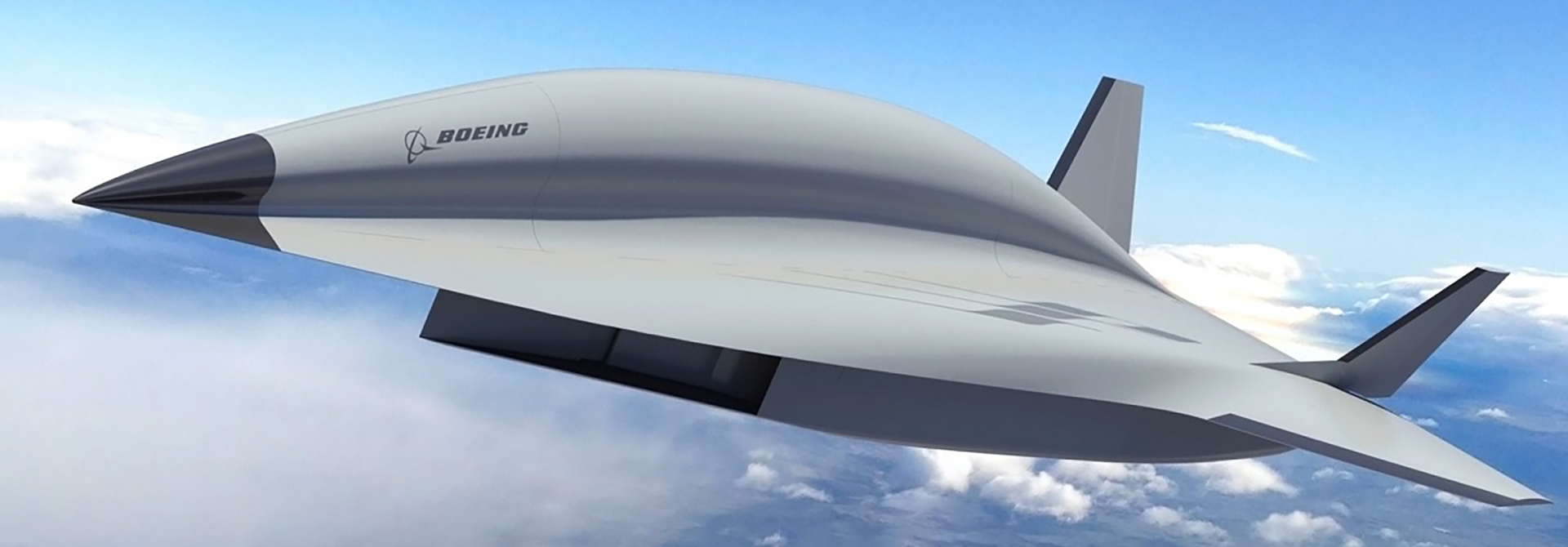In early 2018, Boeing showed its concept for a Mach 5 hypersonic future high-speed strike and reconnaissance aircraft at the American Institute of Aeronautics and Astronautics SciTech forum. It showed remarkable similarities to the legendary SR-71, the Mach 3 spy plane from the cold war era.
At the time Kevin Bowcutt, Boeing chief scientist for hypersonics told Aerospace Daily that the vehicle is based on Boeing’s experience with the X-43 and X-51A (the first vehicle to demonstrate sustained air-breathing hypersonic flight) projects and includes input from the XB-70 program. “It’s a really hard problem to develop an aircraft that takes off and accelerates through Mach 1 all the way to Mach 5 and beyond. The specific impulse of an air breathing engine goes down with increasing velocity, so you have to make the engine bigger to get to Mach 5. But doing that means a bigger inlet and a bigger nozzle and trying to get that through Mach 1 is harder.”
Three years later and eighteen months into the Covid pandemic, this vision has not gone away. NASA has already awarded the famed Lockheed Martin Skunk Works in California (where the X-59 supersonic jet is currently taking shape) (add link to the news article) with a contract to study the feasibility of building a hypersonic propulsion system for a concept intelligence, surveillance and reconnaissance (ISR) aircraft using existing turbine engine technologies.
Unlike the SR-71 this time the plan is for an unmanned aircraft, though that might change if there is a chance to go on a prove the concept works for commercial air travel.

In his book, 75 years of the Lockheed Martin Skunk Works, James C. Goodall says the contract provides for a parametric design study to establish the viability of a turbine-based combined cycle (TBCC) propulsion system consisting of several combinations of near-term turbine engine solutions integrated with a very low-Mach ignition dual-mode ramjet (DMRJ). NASA is funding the validation of a previous Lockheed study that found that speeds up to Mach 7 could be achieved with a dual-mode engine that combines turbine and ramjet technologies.
Typically, turbine engines, like those used in Concorde, accelerate to around Mach 2.2, far below speeds at which a ramjet could take over. Most ramjets cannot achieve ignition below Mach 4. The USAF X-51 Waverider proof-of-concept demonstration was powered to Mach 4.8 by a booster rocket before accelerating to Mach 5.1 using its ramjet engine.
The challenge for NASA and Lockheed is how to bridge the gap between a conventional jet engine (Mach 2.2) and a ramjet (Mach 4+), on a reusable airframe. Possible jet engine candidates for sped enhancement include like the Pratt & Whitney F100-PW-229 (powering the F15 & F16) and the General Electric F414 (powering the FA-18 & Super Hornet).
At Lockheed’s annual media day in March 2016, CEO Marillyn Hewson that the aerospace company had made “several breakthroughs” on a hypersonic warplane that could reach Mach 6, known as the Hypersonic Test Vehicle 3X (HTV-3X). In her statement she gave updates on several projects:
- Every day over 60,000 engineers are focused on developing the most innovative solutions the world has ever seen.
- Lockheed Martin continues to invest in propulsion technologies and advanced materials needed for hypersonic speeds.
- We accomplished several breakthroughs on HTV-3X. And we’re now producing a controllable, low-drag, aerodynamic configuration capable of stable operation from take-off, to sub-sonic, trans-sonic, super-sonic, and hypersonic to Mach 6.
- And most importantly, we’re proving a hypersonic aircraft can be produced at an affordable price. We estimate it will cost less than $1 billion dollars to develop, build, and fly a demonstrator aircraft the size of an F-22.
- The other DARPA program, the HTV-2, has demonstrated robust and stable aerodynamically controlled flight at speeds greater than Mach 20.
- It has also employed a number of innovative technologies to enable long-duration, maneuvering, hypersonic flight, including Aerodynamic shapes that are maneuverable
There is no date yet (at least not in the public arena) for test flights or even when an updated concept design will be released.


0 Comments